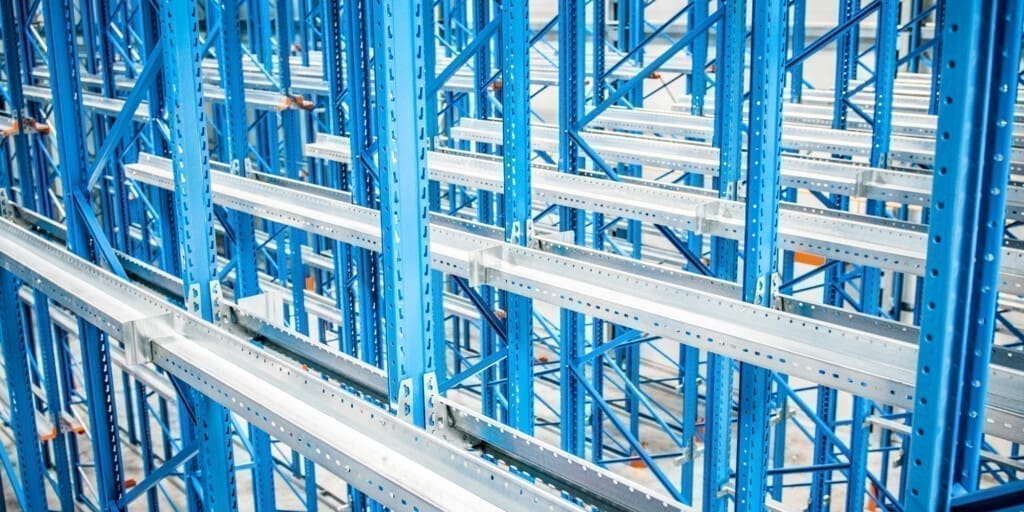Ökat lagringsutrymme
med drive-in-pallställ
Building drive-in installations with stow Pal Rack®
stow’s Pal Rack® system is particularly suitable to build drive-in installations. The upright widths of up to 140 mm allow us to build very high installations. The height partitioning of each lane can be set individually.
Productivity and safety are increased by the use of high visibility upright guards and ground rails. The entry guides are not connected to the ground rails, allowing quick replacement in case of damage. Thanks to the shape of the entry guide damage to the pallets at ground level during storage or retrieval is avoided. The design of the system is done in such a way that entry guides stick out 200 mm, avoiding collisions with the drive-in structure.
Middle or end stops are used to protect the wall or to position the pallets correctly in the lanes.
Increased storage space
Safe block stacking
of fragile goods
Very high
installations possible
High level of safety
Drive-in rail design: Productivity and safety
To guide the truck or pallets and to protect the installation we recommend the use of ground rails. As we do not want to compromise on the durability of our systems and safety of its users, we maintain the highest quality standards in the market for ground rails, protectors, backstops, etc.
The specially designed rail offers a safe and smooth surface. The rail can be produced in lengths of up to 9 m, so almost no rail connections are needed. This special design ensures that it is hardly sensitive to torsion under load, allowing bigger spans between two supporting arms.
Types of drive-in racking
There are three types of drive-in racks, depending on the load and unload procedure and the accessibility:
In a single drive-in the first pallet is placed at position 1 and the rack is loaded from the bottom to the top and from the back to the front. The unloading follows the inverse procedure, from the front to the back, from top to bottom. The loading and unloading sequence follows the LIFO principle (Last In, First Out).
In double drive-in installations the load and unload sequence is the same as in a single drive-in racking. It is composed of two drive-in racks, placed back-to-back.
In drive-through installations loading and unloading happens from opposite sides, according to the FIFO principle (First In, First Out).
Triggered?
Request the comprehensive brochure.







